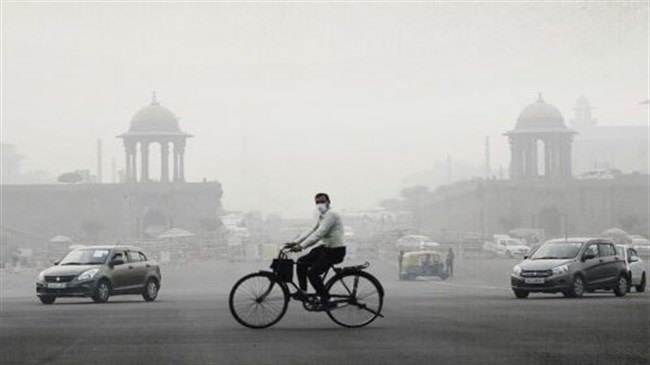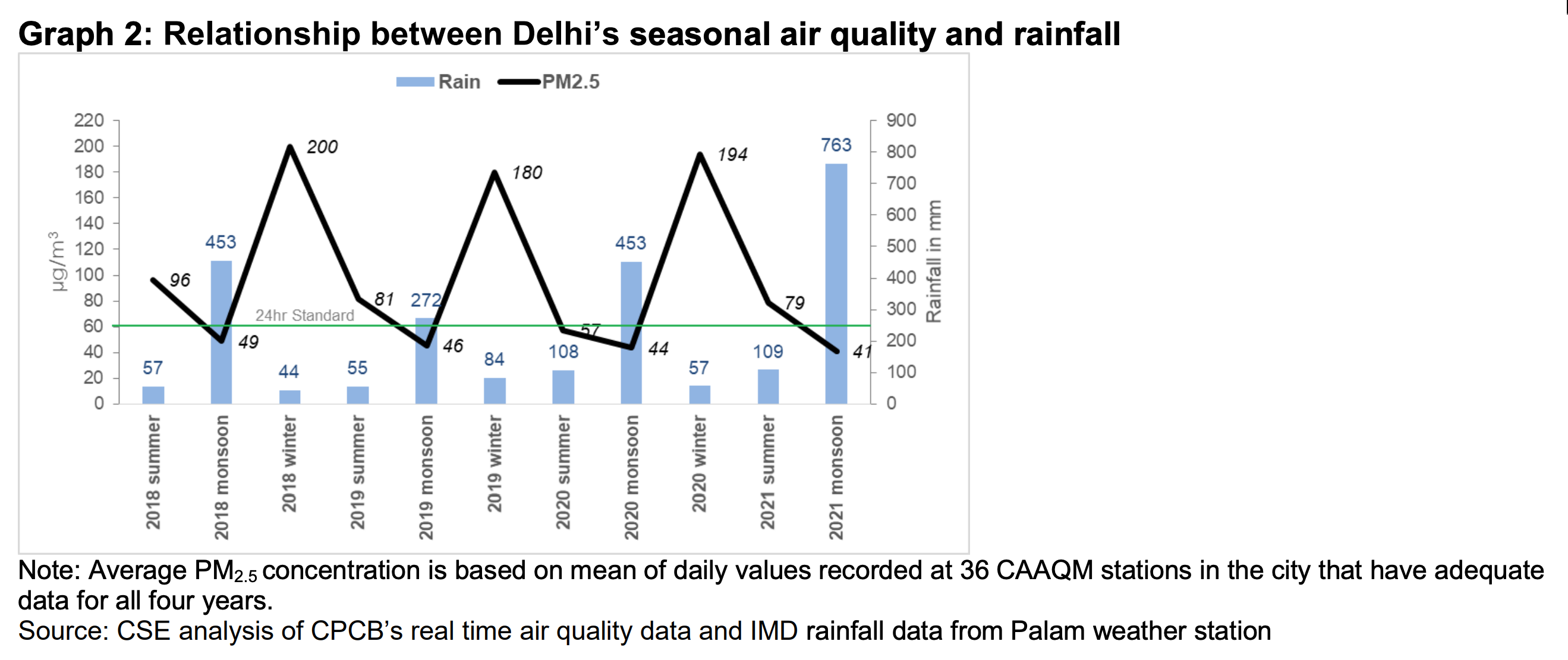Severe peak in winter smog expected in Delhi, quick action required to counter this: CSE Report
CSE’s latest analysis of the air quality trends warned that Delhi and NCR will witness severe peak smog as stubble burning will be concentrated due to delayed rains. More details here.


Picture : @CSEIndia
2021 is starting in Delhi with cleaner air as compared to the previous year as per an analysis released by New Delhi-based Centre for Science and Environment (CSE). However, the report titled, Winter is coming: Understanding pre-winter air pollution baseline in Delhi-NCR, warned that this winter may experience a severe peak in smog, as farm stubble fire counts may get concentrated due to the delayed effect of the rains.
Usually, the smog that occurs in the end October and the beginning of November is driven by stubble burning in Punjab and Haryana, Avikal Somvanshi, the programme manager at the Urban Data Analytic Lab at CSE told Gaon Connection.
However, the delayed monsoons this year stalled the stubble burning, he pointed out. “This implies that the stubble will be burnt in a concentrated manner, at the end of the month. The quantum of smoke coming to Delhi would be in higher concentration which will lead to a peak in smog. Immediate action needs to be taken to counter it,” Somanshi said.
The report, released on October 22, highlighted that Delhi witnessed its cleanest monsoon season in the last four years (July 1 to October 15). The city-wide average for the monsoon stood at 41 microgram per cubic metre (ug/m3), with 96 days meeting the 24-hour standard for PM2.5 (particulate matter that is 2.5 microns or smaller in size).
The advantage of improved air quality during the summer of 2020 due to the lockdown was however lost in the summer of 2021, and PM2.5 levels in 2021 seemed to have almost returned to the 2019 levels despite the partial lockdowns, the CSE report noted.
It assessed the annual and seasonal trends in PM2.5 concentration for the period January 1, 2018 to October 15, 2021. The analysis was based on real-time data available from the currently operational air quality monitoring stations in Delhi-NCR and the larger Indo-Gangetic Plain (IGP).
The report investigated the air quality trends in the national capital territory of Delhi, the National Capital Region (NCR), and the larger Indo-Gangetic Plains. It covered 156 continuous ambient air quality monitoring stations (CAAQMS) spread across 67 cities in Punjab, Chandigarh, Haryana, Delhi, Rajasthan, Uttar Pradesh, Bihar and West Bengal.

Sharing the preventive measures that need to be taken to check air quality in the region, Anumita Roychowdhury, the executive director (research and advocacy) at CSE said, “Delhi and the larger region will require urgent action to prevent severe smog episodes as well as speed up deeper reforms to sustain the gains. Reduce traffic volume, eliminate waste burning, eliminate dirty industrial fuels, and implement stringent dust control measures — especially in the construction sector.”
Improvement in Cleaner days since 2018
The report highlighted that there was an average six per cent annual improvement, since 2018, in the number of cleaner days. Dr. Karni Singh Shooting Range in Delhi recorded the lowest seasonal average of 33 ug/m3 whereas Anand Vihar, with a season average of 61 ug/m3, had only 54 cleaner days which made it the worst hotspot in the city.
The advent of the monsoon’s retreat date almost perfectly coincided with the start of bad air days in Delhi. Bad air days means the PM2.5 average breaches the standard and remains above that for the rest of the season.
As per Central Pollution Control Board (CPCB) air quality standard (AQI) is categorised into six parts. AQI between 0-50 is considered ‘good’, ‘51-100’ is satisfactory, 101-200 is ‘moderate’, 201-300 is ‘poor’, 301-400 is ‘very poor’, and between 401-500 is ‘severe.’
Talking about the volatile trends observed in pollution hotspots, Somanshi said, “Distinct trends are emerging over the years. The number of days with a severe concentration of PM2.5 has declined and, duration of smog episodes are shorter, as is evident during the 2020-21 winter. Some pollution hotspots are recording higher PM2.5 levels compared to the city as a whole and the regional averages even during monsoons.”

Smog episodes during the 2020-21 winter witnessed a decline
During the winter of 2020-21, the number of days with a city-wide average of PM2.5 concentration in ‘severe’ or ‘worse’ AQI sub-categories was down to 23 from 25 such days in 2019-20 winter, and 34 such days in 2018-19 winter.
According to the CSE report, a smog episode takes place when the levels of PM2.5 remain in the ‘severe’ category for three consecutive days. From this perspective, there were two continuous smog episodes in this period. The first one lasted for seven days from November 3, 2020 to November 10, 2020, and the second one was on December 22, 2020 that lasted for just three days. Thus, the report concluded that continuous smog episodes were fewer and shorter as compared to the previous winters.
While the winter season of 2020-21 was 5 per cent worse among the major NCR cities and Delhi, as compared to the 2019-20 season, the peak pollution was 13 per cent lower. From the 2019-20 trend, it can be expected that smog episodes in 2021-22 might have a higher peak pollution if prevention measures are not taken to reduce pollution, the report noted.
For 2019-20, this can be attributed to the September-October rains that pushed and concentrated the farm stubble burning towards the end of October, and beginning of November when winter conditions were turning more adverse.
PM2.5 hotspots
Eleven of 18 recognised hotspots registered higher seasonal averages than the city and the region, but only Anand Vihar and Punjabi Bagh showed worsening air quality during the 2021 monsoon as compared to 2020 monsoon, the report noted.
Fifty per cent of the 14 new locations in NCR, which were identified as emerging hotspots by CSE, registered lower levels of air pollution this monsoon as compared to city and regional averages.
Bhiwadi in Rajasthan, Manesar in Haryana, and Sector-11 in Faridabad have also emerged as potential hotspots, wherein Sector 11 had the worst air (64 ug/m3) during this monsoon in NCR. From the list of 35 recognised and emerging hotspots, only three locations – Mayapuri, Okhla Phase 2, and Sanjay Nagar – had their summer averages below the regional average of 75 ug/m3. Two hotspots that showed improvement were Wazirpur and Sahibabad.

Changing pattern of lead pollutants and AQI during pre-winter months
While particulate pollution dominates the daily pollution in Delhi, other gaseous pollutants like ozone and carbon monoxide have become the lead pollutants along with particulate pollution of the day due to wash-out effects of rains.
The months of September and October show that the number of days in the ‘satisfactory category’ increased from 43 per cent in 2019 to 90 per cent in 2021. This had come down to 27 per cent in 2020. A similar pattern was observed in the ‘moderately polluted’ category. Fortunately, October, 2021 did not witness any day in the ‘poor category.’

